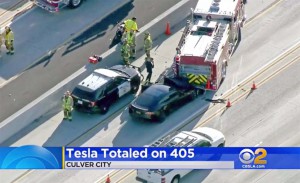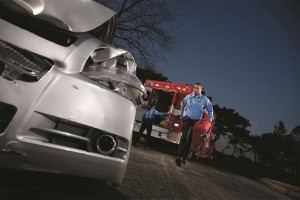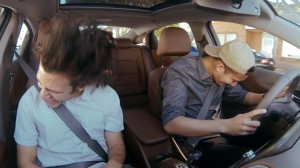Preliminary figures reveal that U.S. highway deaths declined nearly 1% last year but, at 40,100 fatalities, there’s no room for “complacency,” warned the National Safety Council.
Last year’s numbers were still significantly higher than in 2014 which marked the end of a decade-long decline in traffic deaths. And it is still the second year in a row that there were more than 40,000 Americans killed on the highway. The question, according to the NSC, is whether 2017’s decline was just brief a respite or the start of another era of improved automotive safety.
“The price we are paying for mobility is 40,000 lives each year,” said Deborah A.P. Hersman, president and CEO of the National Safety Council. “This is a stark reminder that our complacency is killing us. The only acceptable number is zero; we need to mobilize a full court press to improve roadway safety.”
Traffic fatalities began plunging in 2008, reflecting improved vehicle design and the use of advanced safety technology, as well as a crackdown on drunk driving. By 2011, the total was down to around 32,000, the lowest figure in six decades. But deaths began to rise during the final months of 2014 and increased 7% the following year. Fatalities jumped another 7% in 2016, marking the first time the tally topped 40,000 in a decade.
The all-time high was 54,589 in 1972, just as the first federal motor vehicle safety standards were going into effect.
Experts point to a variety of factors that may have led to the two-year spike, including an upturn in the American economy which saw more people get back on the road, whether for work or pleasure. There’s been a particularly significant surge in teen fatalities, as well, as more young motorists have again taken to the road.
(A push to lower minimum BAC for drunk driving is gaining momentum. For more on the story, Click Here.)
While the economy may have gone through a long recovery, however, research shows that many Americans have been struggling financially, often working multiple jobs to make ends meet. The impact of that was revealed in a study released by AAA this month. It suggested that as many as one in 10 U.S. highway deaths are the result of drowsy driving.
“Drowsy driving is a bigger traffic safety issue than federal estimates show,” said David Yang, the travel and road service’s traffic safety director said. “Drivers who don’t get enough sleep are putting everyone at risk.”
If the research by the AAA Foundation for Traffic Safety is correct, that would make drowsy driving as dangerous as the surge in distracted driving which the National Highway Traffic Safety Administration now blames for about one in every 11 roadway deaths.

Autonomous technology is expected to lead to a sharp decline in fatalities, but as a recent Tesla crash indicates, it's not yet fully ready or reliable.
There has also been concern that the crackdown on drunk driving may be losing momentum, while there are some signs that the easing of marijuana laws in states like California, Colorado and Washington may also be leading to a rise in crashes.
(Is getting high leading to higher crash numbers? Click Here for more.)
For now, authorities and experts are hoping that 2017 marks the beginning of another era in which roadway safety improves. Last year also brought a 1% dip in motor vehicle-related injuries, at 4.57 million. And the estimated cost of crashes, in terms of deaths, injuries and property damage, dropped 1% to $413.8 billion.
On average, 1.25 Americans are killed for every 100 million miles driven. That was down about 2% from 2016.
Experts are hoping that a new wave of safety technology, often referred to as Advanced Driver Assistance Systems, or ADAS, will further reduce crashes, injuries and fatalities. Longer-term, there’s a broad consensus that autonomous and fully driverless vehicles could eventually eliminate highway deaths entirely.
(Click Here to see why high-tech safety gear is cutting down on accidents, but causing insurance rates to rise.)


